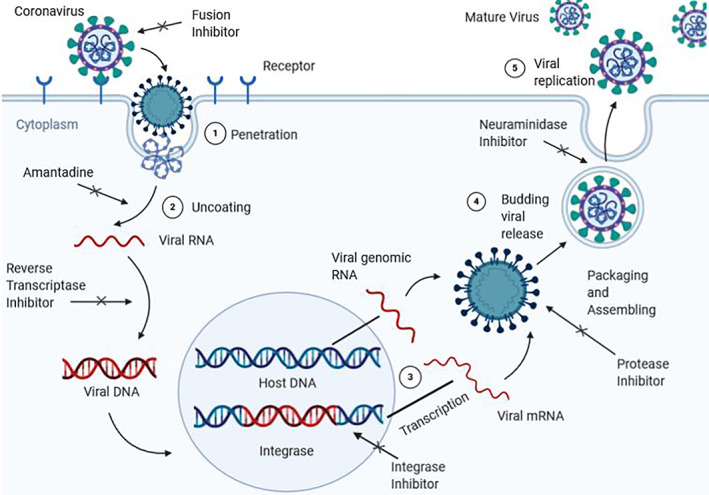FIGURE 2.

A general mechanism of viral replication in host cells and functions of inhibitors at various stages during the process. The virus first binds with the receptor of the host. A drug which is designed to be a fusion inhibitor will function at this stage by preventing the virus from binding with the receptor. Then, the virus will penetrate into the cell cytoplasm of the host. It undergoes uncoating at this stage. An amantadine inhibitor targets this stage and prevents uncoating. The viral RNA then transforms into a viral DNA. A reverse transciptase inhibitor works at this stage and prevents the viral DNA from being formed. The viral DNA then brings changes in the amino acid sequence of the host DNA and inserts itself in the sequencing. An integrase inhibitor prevents the virus from changing this sequence. With this, we get viral genomic RNA and viral mRNA. A protease inhibitor functions at this stage and prevents viral replication by selectively binding to viral proteases (eg, HIV‐1 protease) and blocking proteolytic cleavage of protein precursors that are necessary for the production of infectious viral particle. The neuraminidase inhibitor targets this stage and prevents the virus from replicating, hence, preventing its reproduction by budding from the host cell. After this stage, the mature virus replicates itself and viral infection occurs. Image created with https://biorender.com/
